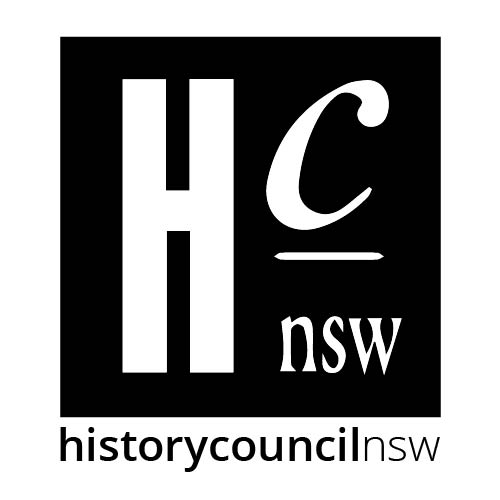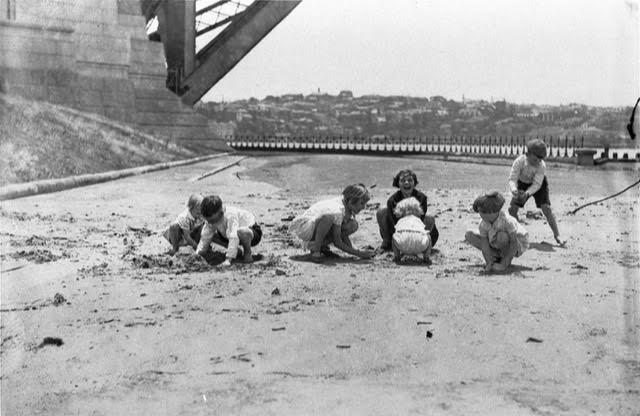Image: Photograph of a group of children playing in the sand, courtesy of the State Library of New South Wales, IE1307337.
Emily Gallagher, a PhD student from the Australian National University, recently contacted the History Council of NSW as she would like our members to help contribute to her research project.
Emily’s study focuses on the history of play and folklore in Australia. Very little has been written about the history of children’s play in Australia pre-1950 – a gap that Emily is hoping to resolve.
Below is Emily’s full letter of appeal:
‘I am writing to ask for your help to find out what it was like growing up in Australia in the early decades of the twentieth century (1901-1939).
You might number among the generation who remembers ‘those days’, when children rode ponies to school, played at marbles on the street and dreamed of Shirley Temple. Perhaps you know of someone – a family friend or grandparent – who wrote recollections of their childhood. Or maybe there are old toys, scrapbooks, drawings, letters, postcards, school exercise books or family photographs tucked away in the attic or on the upper shelves of the living room bookcase.
Since I started searching for unpublished memoirs of Australian childhood late last year for my doctoral research, I have been intrigued by the extraordinary potential of family collections to enrich the history of children’s play and folklore. Even where public institutions might have overlooked the importance of such materials, families have recognised their significance, preserving stories and artefacts that are of immense value for historians and folklorists.
It is my hope that at least some of these family collections can be used to help provide insight into the lives and experiences of children growing up in Australia before the outbreak of the Second World War in 1939. As children tiptoed to the toilet or lay awake at night, what monsters stalked their imagination? What secrets did they giggle or fight about with their friends and siblings? What kinds of games did they play with their dolls, meccano, toy cars and miniature soldiers? Where did children ride their billycarts (go-carts) and bicycles? What were the most popular skipping rhymes, slang, insults, jeers and jokes on the playground?
The 1920s and 1930s are still within living memory, but only just. If you are willing to contribute to this project by donating copies of materials or sharing your memories of growing up in Australia, please contact me via email, or mail (phone number available upon request).’
Contact Details:
Email: emily.gallagher@anu.edu.au
Mail: Emily Gallagher
School of History
Coombs Building
Australian National University
Canberra, ACT, 2601
The ethical aspects of this research have been approved by the ANU Humanities & Social Sciences Delegated Ethics Review Committee (Protocol 2017/851). If you have any concerns or complaints about how this research has been conducted, please contact:
Ethics Manager
The ANU Human Research Ethics Committee The Australian National University
Telephone: +61 2 6125 3427
Email: human.ethics.officer@anu.edu.au


Hi Emily,
Are you still looking for history from families from 1901 to 1939. I have a bicentenial book called Memories of School Days by ex-pupils of Carlingford School 1888 to 1988. It belonged to my mother who passed away 2 years ago. It has some of my relatives stories in the early 1900’s and some stories from the late 1800’s. Some of the families talk about life on farms quite some distance from the school they attended.
If you are still interested you may contact me via email and I will give you my phone number.